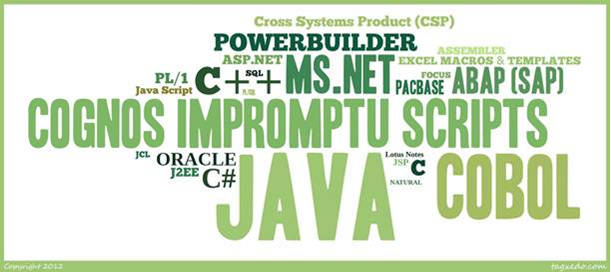Top 25 Programming Languages since 2008

In response to my previous post, I made a new word cloud for the top 25 programming languages in the QSM historical database from 2008 to present.
One striking difference between this word cloud and the last week's is that the font sizes are much smaller, due to the smaller sample size. Since word clouds use font size to represent size within a sample, this is expected since the entire QSM database is larger than the sample from 2008 to present.
Unlike last week's cloud, Java is the predominant programming language since 2008. Java represents 26% of the sample since 2008 while COBOL, the #1 programming language in the entire database, holds only 11% of this sample. According to Langpop.com, a site which ranks the popularity of programming languages using search results, Java ranks second in the Normalized Comparison chart, just below C.
In Programming Language Trends: An Empirical Study, a paper from the New Jersey Institute of Technology, the authors attempt to predict the popularity of programming languages by using regression analysis which focuses on intrinsic and extrinsic factors.

